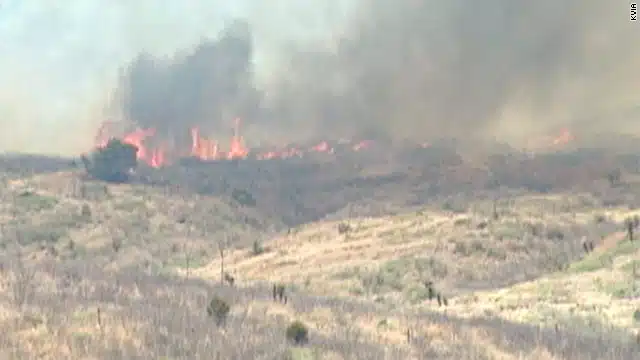Firefighters in the Texas Panhandle faced a tightening timeframe to combat the raging wildfires as weather forecasts predicted a resurgence of adverse conditions. With higher wind speeds and hotter, drier air expected to return over the weekend, the urgency to contain the wildfires intensified.
Among the blazes, the Smokehouse Creek fire emerged as the largest and most formidable. By Wednesday evening, only about 3 percent of the inferno was under control, with its vast expanse reaching approximately 850,000 acres—a staggering increase from the previous day and edging close to the record for the largest fire ever recorded in Texas, according to the Texas A&M Forest Service.
To confront this escalating crisis, firefighters from across the state, including distant locales like Lubbock and Fort Worth, were mobilized under Governor Greg Abbott’s disaster declaration issued on Tuesday. However, their efforts were hampered by the dwindling window of opportunity to contain the blaze before weather conditions exacerbated the situation once more.
Edward Andrade, the lead forecaster at the National Weather Service office in Amarillo, emphasized the critical nature of the upcoming weather fluctuations. While Thursday offered a slight reprieve with weaker winds and cooler temperatures in the 30s and 40s, the respite was expected to be short-lived. By Saturday, strong winds, gusting up to 30 miles per hour, coupled with rising temperatures back to the 70s, were forecasted to reignite the fire’s fury, hindering firefighting operations.
Andrade expressed concern that the Smokehouse Creek fire complex could surpass previous records, fueled by the challenging terrain of the Canadian River Valley where the blaze originated. Rugged landscapes featuring cliffs, valleys, and steep hills posed significant obstacles for firefighting teams, limiting access for fire trucks and exacerbating containment efforts.
The widespread impact of the wildfires extended across 11 counties, predominantly in areas designated for farming and cattle ranching. In Canadian, Hemphill County, the inferno wreaked havoc, destroying or damaging numerous homes, exacerbating the plight of affected communities.
As the fire danger rating escalated to “very high” on Friday and Saturday, Andrade urged residents to exercise utmost caution and adhere to fire safety measures to prevent further devastation. The imperative for proactive prevention measures underscored the gravity of the situation, emphasizing the collective responsibility in mitigating the wildfire threat.

